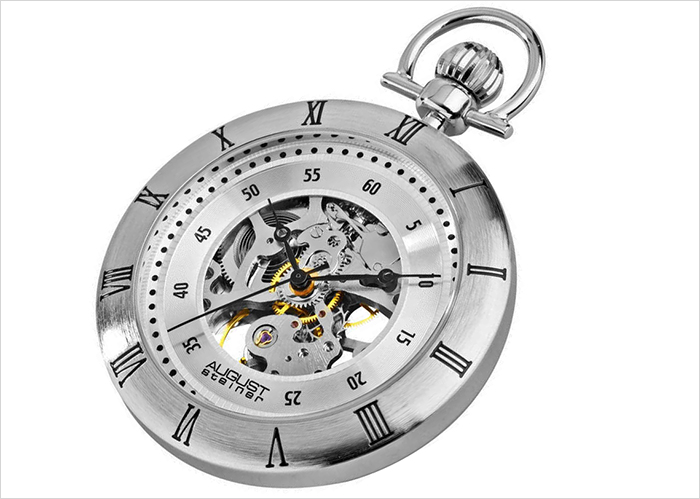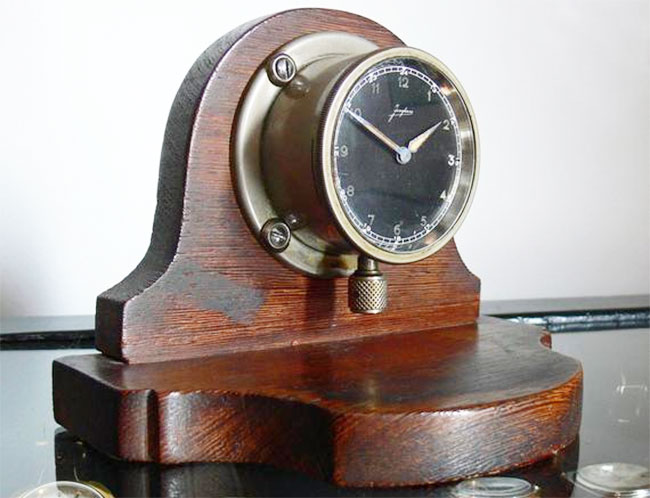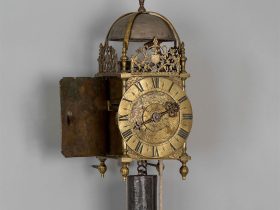In this article we will give you information about british anique clocks, its history, types and some of the most famous clockmakers.
The british antique clock’s reputation found its roots in the clock making skills of the early English clock-makers at the end of the 16th century.
Their capacity in innovating and improving clock accuracy has brought renown to the English clock making industry.
History of British clocks
Known Dutch mathematician, physicist, and astronomer Christiaan Huygens’ invention of the pendulum (patented in 1665) was a breakthrough in timekeeping and in the clock making industry.
The knowledge of pendulums was taken to Great Britain by Ahasverus Fromanteel (a London clockmaker) while Huygens himself brought it to France allowing several clockmakers to produce pendulum driven table clocks.
However, neither the Dutch nor the French promptly saw the advantages of Huygen’s invention, it was the British that largely capitalized and used it extensively. As such, it formed the foundation of the English clocks lead role in clock making.
In 1670, an Englishman by the name of William Clement improved Huygen’s invention by developing the anchor escapement which was widely used to improve later time keeping instruments.
Early English clockmakers made great strives to create more accurate clocks.
Early British clockmakers
British clockmaking has a storied past dating back centuries. The origins of clockmaking in Britain can be traced to the 17th century when skilled artisans began crafting timepieces of exceptional quality. Clockmakers like Thomas Tompion and George Graham made significant contributions to the development of horology in Britain. These pioneers paved the way for the golden age of British clockmaking during the 18th and 19th centuries.
One of the most iconic British clock designs, the bracket clock, emerged during the late 17th century. These small, portable clocks were known for their exquisite wooden cases, often adorned with intricate marquetry, and they were highly sought after by the aristocracy.
Early clockmakers were mostly convened in the City of London and includes the names of:
• Nicholas Kratzer / Craczer (1487 – 1550) – a German astronomer who lived in England for 30 years, he was a deviser of King Henry VIII horologes.
• Thomas Tompion (1639–1713) – Father of English clock making, an early member of the Clockmakers Company in London and was England’s most prominent clockmaker. During his entire career, he was able to build about 5,500 watches and 650 clocks.
• George Graham (1673 – 1751) – He was partner to the influential English clockmaker Thomas Tompion during the last few years of Tompion’s life. He is credited with inventing several design improvements to the pendulum clock, inventing the mercury pendulum and also the orrery. He was made Master of the Worshipful Company of Clockmakers in 1722.
• John Harrison (1693 – 1776) – one of the most famous English clock makers whom started as a carpenter in his father’s trade but had great tastes for mechanical pursuits and soon devoted much of this attention to the improvement of clocks and watches. He was also responsible for the development of the marine chronometer in 1761, a major technological achievement of the 18th century.
• Edward East (1602–1696) – a noted English clockmaker who became Charles I horologist at the height of his fame in 1673. He was trained as a goldsmith, and he was a founding member of the London Clockmakers Company in 1631. He was one of the ten original assistants named in the charter of incorporation of the Clockmakers’ Company, and quickly took a leading role in its activities.
• Bartholomew Newsam – was established in London from 1568 – 1593, he was clockmaker to Queen Elizabeth I, probably born at York. Newsam carried on business in London as a clockmaker, apparently from the date of Queen Elizabeth’s accession in 1558.
Other UK’s prominent clockmakers are:
Ferdinando Garrett (1600), Daniel Ramsay (1610), William North (1615), Rainulph Bull (1617), Timothy Gray (1633), Peter Laundre (1640), Thomas Alcock (1661), James Gibson (1669), James Clewes (1670), John Hunt (1671), Thomas Grimes (1671), Joseph Windmills (1671), William Dent (1674), Charles Le Febuce (1687).
Styles and designs of British clocks
The advent of the pendulum mechanism also marked the birth of incorporating designs and various styles onto the British time tellers.
It was headed by the simple changes of the antique clock cases which shifted from metal to wood. The clock aesthetics by two major clock making countries, England and France took different approach in their respective designs.
France focused mainly on the artistry of their timepieces thus their clocks kept in constant pace with any major development in styles. On the other hand antique clockmakers in UK concentrated on ways to improve and achieve better time keeping accuracy.
For this reason, the styles and designs of old British clocks were more or less 25 years behind compared to the French ones.
Early English clock designs are often hand made and their clock faces are always dominantly rectangular.
But, at the end of the 18th century they started to keep up with the artistic schemes of their time thru the influence of great designers such as Adam, Chippendale, Hepplewhite, and Sherton.
From then on, physical appearance of English antique clocks gradually changed. Several improvements in clock case styles, wood and finishes, incorporation of various elements, transformation of shapes and forms soon graced its designs.
Also, the influence and emergence of strong regional characteristics from which several categories were determined created wide and various depictions of the English timepieces.
This change led and gave an opportunity to British clockmakers to show their ingenuity, clock making skills, cutting edge designs and complicated functions in their clocks.
Different types of antique British clocks
A number of antique clock types owe their derivation to the genius and skills of the early British clockmakers
• British Lantern clocks – Lantern clocks were the first domestic clocks in England. It started production from the 1400s until early 1600’s, became established and continued largely for about 150 years.
The term is derived from the word “Latten” which is both because of its great resemblance to a lantern and is also the past name for brass by which it is largely constructed from.
English antique lantern clocks were weight driven, to be hanged and displayed on walls, and scaled at about 16” high.
They were among the earliest clocks that used a balance wheel or foliot escapement.
In the late 1700’s, Great Britain’s clock production consisted mainly of the long case clocks and bracket clocks. They were expensive and only affordable by royalty and the well-to-do families.
• British grandfather clocks – basically evolved from lantern clocks taking inspiration from the long pendulum by which its long case is designed for.
English tall case clocks were in production from 1660 – 1860 (manufacturing both 30-hours and 8-day long case clocks), a more or less 200 years which stopped around c.1880.
The use of springs in antique clocks came about in mid 1600’s, replacing weights for motive power. This initiated the evolution of more portable, smaller timepieces such as:
• British bracket clocks – adapting the use of the pendulum mechanism, British clockmakers were able to develop bracket clocks (usually have an 8-day mechanism).
Most English bracket clocks that made their way to other foreign countries were made in London.
• British mantel clocks (table clocks).
Antique English mantle clocks can be easily distinguished from the French thru their advance mechanisms which is why they are often found in studies and libraries.
To make clocks smaller and portable, British clockmakers adopted the Fusee movements into their clocks.
• British fusee dial clocks – invented in 1775, this antique clock was plain and simple with spring-driven.
It consists of large dials, making it easy to read, the clock movement is housed in a simple wooden box behind a round glazed dial.
This basic design remained until 1970’s.They still called railway or school clocks which ran industrialized Britain.
Soon after the development of portable timepieces, the demand shifted to clocks that can be used over long sea voyages.
• English Marine chronometers – English clockmaker, John Harrison devoted his lifework to develop the first nautical chronometer. He was able to produce the first ship chronometer after 31 years of trial and errors.
This marine clock was precise enough to be used as a portable time standard that can determine longitude thru celestial navigation.
The marine chronometer was one of 18th century’s greatest invention which revolutionized naval and aerial navigation.











Leave a Reply